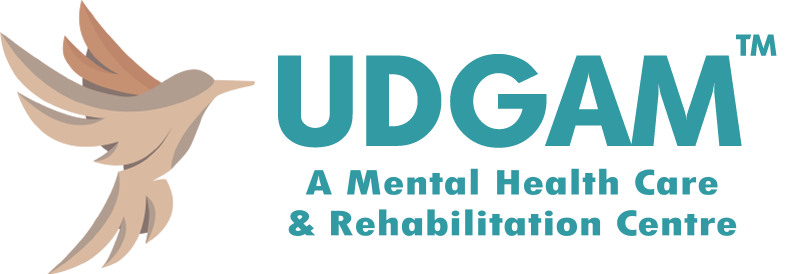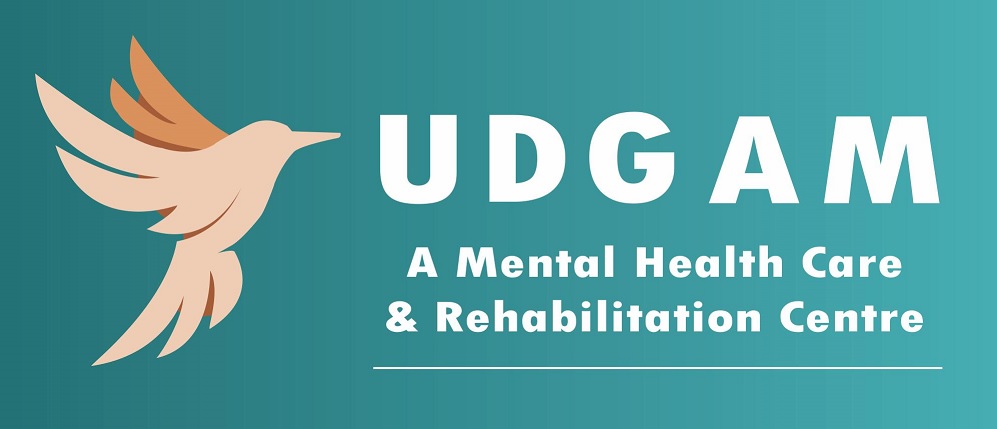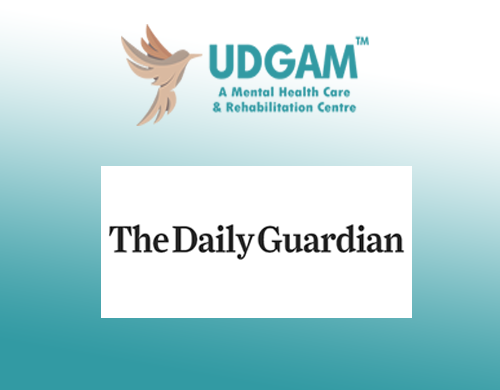
Preventing the mental health pandemic
As India emerges from more than two months of a national lockdown and embraces Unlock1.0, restrictions are being relaxed in zones where the caseload had not been too high.
However, experts warn that the COVID-19 pandemic could have sown the seeds of another: a mental health pandemic.
In a perspective titled “Managing Mental Health Crisis Critical During COVID-19”, Frost & Sullivan analysts point out that the World Health Organisation (WHO) noted that depression and anxiety can have an estimated cost of $1 trillion per year in lost productivity.
The World Federation for Mental Health has appealed to all countries and their governments to ensure that national mental health plans are designed to include the management of the mental health consequences of the pandemic. A mental health emergency plan that ensures access to mental health services is required. Social media and other conventional media outlets can be incorporated into the plan to create and spread awareness.
As a consequence of physical distancing guidelines, the report points out that telepsychiatry and virtual mental health care are taking off, globally. According to the CB Insights study, the 2020 Q1 saw a record equity funding of $576 million for mental health start-ups, 60 per cent higher than 2019 Q1.
Virtual mental healthcare vendors, especially in the US saw a surge in bookings and are trying to meet the increase in demand by introducing new services, quickening launch timelines, and onboarding more doctors.
In India, according to the Indian Psychiatric Society (IPS), as on April 15, 2020, nearly 16 per cent of mental health professionals (656 from a pool of approximately 4,000) are volunteering to provide tele-psychotherapy.
Thus it is increasingly clear that the novel coronavirus has left its mark on our minds, even those of us lucky enough not to have been infected so far.
One of the major changes in the last two months has been the enforced work from home (WFH) arrangements which were thrust on India’s corporate workforce. Almost overnight, the home became an office and employees found themselves juggling multiple roles of employee/parent/spouse at the same time.
While offices in green and orange zones have opened up, staff are working on shifts, with some continuing to WFH in order to adhere to physical distancing norms. Thus the enforced WFH mode will most probably continue for a few months more.
Employees and employers will thus have to take corrective measures to deal with the negative aspects of WFH and halt the mental health pandemic before it gets out of control.
Employers will have to anticipate challenges beyond helping employees with WFH infrastructures like laptops, dongles, and the like.
When a ‘perk’ turns viral …
The WFH option has thus proved to be a double-edged sword if not handled well. As a clinical psychologist, Dr Prerna Kohli puts it, “Prior to COVID-19, WFH was a privilege extended to employees, and employees were grateful as it saved commute time, etc. In the new normal work from home has become a necessity to safeguard oneself and one’s loved ones from the exposure to Coronavirus.”
An important point she makes is that it is not WFH that is causing a myriad of mental health issues but working from home due to COVID-19, which is causing mental health issues.
Her staff at her clinic are observing a sizable increase in anxiety in WFH employees, followed by stress. She, therefore, advises that HR and line managers need to observe if employees display symptoms of anxiety and stress.
Some of these red flags are decreased productivity, low morale, or a lack of hygiene during video/zoom calls, (i.e. the employee is unshaven, not groomed, inappropriately dressed i.e. attending the call in vest etc.)
Other symptoms of stress could be difficulty in remembering tasks or decision making. Restlessness, and/or irritability, as well as panic attacks, are other symptoms to watch out for.
… the workforce zones out …
The COVID-19 pandemic has been harsher for employees working in cities away from their families. “Many of those living alone or away from family has to manage their meals, wash their clothes and clean up their homes on their own, in the absence of maids or supporting hands during the lockdown. Staying in the same room and within four walls, without friends, family members, and social support leads to loneliness,” says Dr Rajesh Kumar, consultant psychiatrist, MAX Super speciality Hospital, Delhi and founder and director, UDGAM, a mental health care and rehabilitation centre.
Almost overlapping with Dr Kohli, the red flags he lists out include disturbed biological cycles, sleep patterns, general body ache, headache increased irritability, decreased work performance, frequent errors in work, delayed or lack of communication, absenteeism or application for leave just to stay away from work, and sharing negative content on social media.
He suggests that the HR department or the employer should make further inquiries regarding stress, anxiety and depression. Another red flag may be in the form of decreased confidence levels, poor attention and concentration, hopelessness, worthlessness and death wish, warns Dr Kumar.
… unless humane WFH policies reel them back in …
Stress and anxiety in the post-COVID-19 era will only increase as the lockdown has disrupted business cycles. Many corporates have responded with pay cuts as well as layoffs and thus managements need to take proactive steps, both for the short term and long term, to help build up the psychological resilience of teams, individually as well as as a team.
Dr Kohli believes that it is important for management to enforce discipline to build psychological resilience of teams and individuals during the aftermath of COVID-19.
Some of the recommended steps she suggests as part of WFH policies by HR are having a dress code for attending conference calls, online attendance tracking mechanisms, using technology platforms such as Slack etc. for easier communications, having a transparent communication with employees on life-altering decisions such as layoffs, or salary cuts and engaging mental health workers (counsellors, psychologists) to help the employees deal with their emotions.
Building on the need for transparency, Dr Rajesh Kumar emphasises, “There must be a detailed discussion about the company’s plans of action, policies regarding job security, pay cuts and layoffs to reduce uncertainties among employee. There must be constant meetings and discussions overwork pressure, deadlines and work burden, and decisions should be taken in a democratic manner.
For employers, he suggests that it is always wise to welcome anonymous feedback, discuss problems in a generalised manner, and share their experiences. They should make sure to address individual problems and try to be non-judgmental and unbiased towards employees. Employees should be given assurances by limiting deadlines and specifying working hours.
Importantly, he also stresses the importance of positive feedback (token money approach, positive conditioning) which is very helpful in motivating co-workers and building confidence.
… to ride the new normal
There is a lot of ambiguity on the nature of the ‘new normal’ and it is a given that change will be the only constant going ahead. So how can the healthcare and pharma sectors prepare for this future?
The good news is that healthcare entities such as hospitals and pharma companies are relatively insulated from the economic downturn compared to hotels, airlines, restaurants etc points out Dr Kohli. But even so, contemporary work environments including hospitals and pharma companies require enormous adaptability.
She advocates that employees should always be prepared for change and expect to work in diverse profiles and with different employers and expect sudden and unexpected unemployment. They should be prepared to work with start-ups, disruptive innovation, and exciting new experiences.
Explaining with an example, in the healthcare sector, elective plastic surgery, IVF has seen a significant decline and it is anticipated that this will be the status quo for the next several quarters. Thus these employees will have to rapidly pivot their skills to other areas which will be in demand in the new normal.
Dr Rajesh Kumar once again underlines the need for detailed discussions about local and generalised data, prediction of the chance of infection and possible risk, duties and responsibilities of staffs, SOPs how to manage the crisis, safety would help. Also, how to take precautions (strict adherence to sanitisation and distancing protocols), how you prepare yourself emotionally and physically for your work and job are important.
He suggests that a work from home or contactless work, with social security measures applied, is advisable in certain cases like pregnancies, employees above 60 years. There should also be a limitation of staff with co-morbidities like diabetes and thyroid problems, compromised immunity in conditions like cancer and autoimmune diseases. Social security should apply.
Changing attitudes to mental health
A mental health pandemic could be even more difficult to tackle due to the stigma attached to mental health issues, especially in a corporate setting as there is fear that it will impact future career prospects.
Dr Rajesh Kumar agrees that employees don’t discuss their official stresses among colleagues, from whom they can seek help. The fear of being fired from jobs, promotion delays, bullying by colleagues, and impact on CV weigh heavily. He has also noticed that either they don’t take leave as advised by mental health professionals, or request the doctor to write some mild or other diseases on the medical certificate.
But Dr Kohli disagrees with this, believing that while the older generation of 35+ may perceive that there is a stigma attached to mental health issues in the corporate setting, the younger generation of 21-35 years is open to discussing mental health issues. She relates how a patient who had improved recommended his/her colleagues to seek treatment from her practice’s psychologists and counsellors.
According to her, today, progressive employers are engaging them to conduct workshops, webinars, talks for their employees on mental health issues. One of the fastest-growing areas in the mental health space is Employee Assistance Programs (EAP), where employers provide their employees and immediate family free or highly subsidised counselling.
“The reality of the fact is that 1 of 7 men and 1 of 4 women will suffer from mental health issues”, says Dr Kohli and this has a direct impact on their performance at the workplace.
Citing research conducted by the WHO and Harvard Medical, she says that the most common mental health issues at the workplace are depression, bi-polar and anxiety disorders.
An employee suffering from depression will lose 27 workdays due to absenteeism per year.
A bipolar patient will lose 28 workdays due to absenteeism and 35 days of lost productivity while an employee with anxiety disorders will lose 27 workdays due to absenteeism per year.
Thus, she believes that for the employer to ignore his employees’ mental health issues is no different from an ostrich who buries its head in the sand.
Common causes for workplace stress
Dr Rajesh Kumar has organised workshops for pharma companies and hospitals and gives insights into the common problems he faced and how he counselled the staff.
He divides the workshop for any institution according to grades, type of work. Each group had its own problems and he noticed the reason for conflict with clients and other staff were issues like lack of clarity of instruction, overlapping of responsibility. For example, in many cases, the receptionist answers queries on behalf of a grievance officer.
Other issues include false assurances and lack of proper escalation of the matter to the authority. Thus the division of responsibility, proper escalation of problems to specific authority, change in body language, increase in coping skills, and focus on professionalism were few instructions and advice.
Gradation of problems and gratitude are crucial. Giving an example, he takes the case of Ms XX, a 32-year-old lady, who was undergoing a legal separation process from her husband and was staying at her mother’s house. She is a receptionist in a premium hospital and was doing excellent work. A few old patients knew her for a long time, and when they noticed that her behaviour had changed, they escalated their matter to the consultant.
She was no longer polite or assuring. She would communicate in a few words with patients and staff. People also felt she remained irritated, made frequent mistakes, and remained aloof. She began taking leave frequently because of headache, body ache, low energy, lethargy, low mood, and low interest in her job, about which she had once been very passionate.
The matter was escalated to her MD, and after a detailed discussion, she revealed her problems. She was under stress and unable to share her grief due to various reasons, and she was suffering from the depressive disorder with symptoms of anxiety. She was given medicines and psychotherapy. Gradually she started working efficiently.
As we return to our workplaces or continue to WFH, the COVID-19 pandemic will definitely not die out. As more people start moving around, so will the virus and experts warn of recurrent waves of infection. While we put in place precautions like disinfection points and spaced out workstations, we have to also keep the mental health pandemic at bay.
While the use of virtual consultations for mental health may slow down post-COVID-19, the Frost & Sullivan report predicts that it will continue to be higher than it was before COVID-19. In addition to fast-tracking launches of their services and demonstrating scaling up abilities, telepsychiatry service providers must have fluid business models. It needs to be based on a variable rather than a fixed cost to manage fluctuating demand.
However, prevention is always better than cure. Both Dr Kohli and Dr Rajesh Kumar advocate common tips: meditation, sleep hygiene, exercise, positivity and the like. Above all, as we build physical immunity to the virus, we have to also shore up our emotional immunity.
The message of COVID-19 is that we are as strong as our weakest links. Thus one infected person could infect more if awareness levels slip. Thus the ‘all for one, one for all’ approach seems the best solution. This entails taking care of individuals as well as teams, physically as well as emotionally, as the only long term sustainable way forward.




